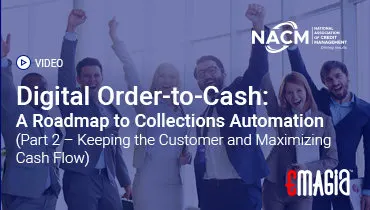Receiving a letter or phone call from a debt collector can be a stressful experience. It’s natural to feel overwhelmed, but it’s crucial to remember that you have rights designed to protect you. Not every debt claim is accurate, and sometimes, collection agencies might be pursuing a debt you don’t owe, one that’s incorrect, or even one that’s past its legal collection period.
This is where a well-crafted dispute letter becomes your most powerful tool. It’s not just a formality; it’s a legal mechanism to challenge a debt and compel the collection agency to provide proof that the debt is valid and that they have the right to collect it from you. Understanding how to dispute a debt with a collection agency is your first line of defense.
This comprehensive guide will walk you through everything you need to know about creating and sending an effective dispute letter. We’ll provide a clear dispute letter template for collection, explain your rights under federal law, detail when and why you should send such a letter, and outline the essential elements to include. By mastering this vital communication, you can protect your financial well-being and ensure fair treatment.
Understanding Your Rights: The Fair Debt Collection Practices Act (FDCPA)
Your ability to dispute a debt is enshrined in federal law, primarily the Fair Debt Collection Practices Act (FDCPA). This act protects consumers from abusive, unfair, or deceptive practices by debt collectors.
What is the FDCPA and How Does It Protect You?
The FDCPA is a federal law that governs the conduct of third-party debt collectors (not typically the original creditor). It prohibits practices such as harassment, false statements, and unfair practices. For instance, collectors cannot call you before 8 a.m. or after 9 p.m. without your permission, use abusive language, or threaten actions they cannot legally take.
Crucially, the FDCPA gives you specific rights regarding debt validation and dispute. Understanding these protections is the foundation of effective debt management and knowing how to dispute a debt properly.
Your Right to Dispute and Debt Validation
One of the most powerful provisions of the FDCPA is your right to dispute a debt and request its validation. If a debt collector contacts you, they must provide you with a “validation notice” within five days of their initial communication. This notice must include:
- The amount of the debt.
- The name of the creditor to whom the debt is owed.
- A statement that unless you dispute the debt within 30 days, the debt will be assumed to be valid.
- A statement that if you dispute the debt in writing within 30 days, the collector will obtain verification of the debt and mail it to you.
- A statement that if you request it in writing within 30 days, the collector will provide you with the name and address of the original creditor.
This 30-day period is your critical window to assert your rights and send a dispute letter. It’s your opportunity to demand proof and ensure the debt is legitimate before taking any further action.
When to Send Your Dispute Letter: Recognizing the Need to Challenge
A dispute letter isn’t just for debts you’re certain you don’t owe. It’s a versatile tool for any situation where you need more information or believe there’s an error. Knowing when to send a debt dispute letter is key.
Unrecognized Debt or Unfamiliar Collector
If you receive a collection notice for a debt you don’t recognize, or from a collection agency you’ve never heard of, a dispute letter is essential. This could be a case of mistaken identity, an old debt you’ve forgotten, or even a scam. Demanding validation forces the collector to provide concrete evidence.
Incorrect Amount or Details
Perhaps you recognize the original debt, but the amount the collector is demanding seems incorrect, or other details (like the original creditor’s name) are wrong. A dispute letter can challenge these inaccuracies and prompt the collector to provide a detailed breakdown of the charges, including any added interest or fees.
Suspected Identity Theft
Unfortunately, identity theft is a growing concern. If you suspect the debt is a result of someone else using your information, a dispute letter is a crucial step. You’ll need to clearly state that you believe you are a victim of identity theft and may need to include supporting documentation, such as a police report or an FTC identity theft report.
Debt Past the Statute of Limitations
Every state has a “statute of limitations” – a legal time limit within which a creditor or collector can sue you to collect a debt. If the debt is very old, it might be past this legal window. While collectors can still try to collect, they cannot sue you. A dispute letter can help clarify the debt’s age and whether it falls within the statute of limitations, especially if you request the date of original delinquency.
Debt Already Paid or Settled
It’s possible you’ve already paid the debt, settled it for a lesser amount, or had it discharged in bankruptcy. If a collector is still pursuing it, a dispute letter, accompanied by proof of payment or settlement, can quickly resolve the issue. This is a common scenario where a debt validation letter sample can be very useful.
Crafting Your Defense: Key Elements of an Effective Dispute Letter
A strong dispute letter is clear, concise, and professional. It should explicitly invoke your rights under federal law and demand specific information. Here’s what to include in a debt dispute letter to make it impactful.
1. Your Information and the Collector’s Information
Start with your full name and current mailing address. Below that, include the collection agency’s name and address. This ensures clear identification for both parties.
2. Date and Account Reference
Always date your letter. Include any account numbers or reference numbers provided by the collection agency. This helps them quickly identify the specific debt they are attempting to collect from you.
3. Clear Statement of Dispute
State unequivocally that you are disputing the debt. Use clear language like, “I am writing to dispute the above-referenced debt.” Avoid admitting to owing the debt or making any promises to pay, as this could inadvertently restart the statute of limitations on older debts.
4. Request for Debt Validation/Verification
Explicitly request validation of the debt as per your rights under the FDCPA. Reference the relevant section (e.g., “pursuant to 15 U.S.C. § 1692g, Section 809(b) of the Fair Debt Collection Practices Act”). This is the core of your letter.
5. Specific Information to Request
To properly validate the debt, ask for detailed information. A comprehensive request might include:
- The original creditor’s name and address.
- The original account number with the original creditor.
- The exact amount of the debt, with an itemized breakdown of principal, interest, fees, and other charges.
- Proof that you are the person legally obligated to pay this debt (e.g., a copy of the original signed agreement).
- The date the debt became delinquent and the date of the last payment.
- Proof that the collection agency has the legal right and license to collect this specific debt in your state.
- A copy of any judgment (if applicable).
The more specific your request, the harder it is for them to provide vague or incomplete information.
6. Reference to FDCPA and FCRA Rights
Reiterate your understanding of your rights. Mention that because you are disputing the debt in writing within 30 days, the collector must cease collection activities until they provide validation. Also, state that if they have reported this debt to any credit reporting agency, they must immediately inform the agency that the debt is disputed, as reporting inaccurate or unverified information violates the Fair Credit Reporting Act (FCRA).
7. Demand to Cease Collection Activity (Until Validated)
Clearly state that all collection activities, including phone calls and letters, must cease until the debt is fully validated and you have had a reasonable time to review the documentation. This is a critical protection under the FDCPA.
8. Professional Tone and Language
Maintain a polite, firm, and professional tone throughout the letter. Avoid emotional language, accusations, or threats. Stick to the facts and legal provisions. A professional approach ensures your letter is taken seriously.
9. Supporting Documentation (If Applicable)
If you have documents that support your dispute (e.g., proof of payment, police report for identity theft, bankruptcy discharge papers), include copies (never originals). List the enclosed documents in your letter.
Sample Dispute Letter Template for Collection
Here’s a general template you can adapt. Remember to fill in the bracketed information and customize it to your specific situation.
[Your Full Name]
[Your Current Address]
[Your City, State, Zip Code]
[Your Phone Number (Optional)]
[Your Email Address (Optional)]
[Date]
[Collection Agency Name]
[Collection Agency Address]
[Collection Agency City, State, Zip Code]
Subject: Dispute of Account – Account Number: [Insert Account Number, if known]
Dear [Insert Name of Collector or Company, if known, otherwise “To Whom It May Concern”],
I am writing in response to your [letter dated/phone call on] [Insert Date of their communication] regarding an alleged debt. Please be advised that I am disputing this debt. This is not a refusal to pay, but a demand for validation made pursuant to 15 U.S.C. § 1692g, Section 809(b) of the Fair Debt Collection Practices Act (FDCPA).
I respectfully request that you provide me with competent evidence that I am legally obligated to pay this alleged debt. Specifically, I require the following information and documentation:
- The exact amount of the alleged debt, with an itemized breakdown of the principal, interest, fees, and any other charges.
- The name and address of the original creditor to whom this debt was originally owed.
- The original account number with the original creditor.
- Proof that I am the individual legally obligated to pay this debt (e.g., a copy of the original signed contract or agreement).
- The date the debt became delinquent and the date of the last payment made on the account.
- Proof that your company is licensed to collect debts in [Your State Name].
- A copy of any judgment related to this debt (if applicable).
- Complete accounting of the alleged debt, showing all charges and payments since inception.
Please be advised that because I have disputed this debt in writing within 30 days of your initial communication, you must cease all collection activities, including further contact with me, until you provide complete verification of this debt as required by the FDCPA. Any attempt to collect this debt without validating it violates federal law.
Furthermore, if you have already reported this alleged debt to any credit reporting agency (Equifax, Experian, TransUnion), you must immediately inform them that this debt is disputed. Reporting information that you know to be inaccurate or failing to report information correctly violates the Fair Credit Reporting Act (FCRA), 15 U.S.C. § 1681s-2.
I am keeping accurate records of all correspondence regarding this matter. I expect a prompt response with the requested validation. If you are unable to provide the requested documentation within 30 days of your receipt of this letter, I demand that all references to this account be deleted from my credit file and that you cease all collection efforts immediately.
Sincerely,
[Your Signature]
[Your Typed Name]
Enclosures: [List any documents you are enclosing, e.g., “Copy of collection letter dated XXXX”]
Sending Your Dispute Letter: Best Practices for Impact and Proof
Writing the letter is only half the battle. How you send it and what records you keep are equally important for protecting your rights and ensuring the dispute process is legally sound.
Certified Mail with Return Receipt: Your Proof of Delivery
Always send your dispute letter via certified mail, return receipt requested. This is non-negotiable. Why?
- Proof of Mailing: It provides a record that you sent the letter.
- Proof of Delivery: The “return receipt” is a green card signed by the recipient, which is mailed back to you. This is irrefutable proof that the collection agency received your letter and on what date. This timestamp is crucial for the 30-day validation period.
- Legal Weight: In any future dispute or legal action, this proof of delivery is invaluable.
Do not send it via regular mail, email, or fax as these methods lack verifiable proof of receipt.
Keeping Meticulous Records: Your Personal Audit Trail
Maintain a detailed record of all interactions related to the debt. This includes:
- A copy of the dispute letter you sent.
- The certified mail receipt and the green return receipt card.
- Copies of any correspondence received from the debt collector (letters, emails).
- A log of all phone calls: date, time, name of the person you spoke with, what was discussed, and any promises made.
- Copies of any supporting documents you sent or received (e.g., payment confirmations, police reports).
This organized record-keeping is your personal audit trail and will be essential if you need to escalate the issue or seek legal advice.
Avoiding Phone Conversations (Initially)
While you might be tempted to call the collector, it’s generally advisable to conduct initial disputes in writing. Phone conversations can be misconstrued, and it’s your word against theirs. A written letter creates a clear, undeniable record of your dispute and invokes your FDCPA rights more effectively. If you do speak on the phone, follow up with a written summary of the conversation.
What Happens After You Send the Letter? Navigating the Next Steps
Once your dispute letter is sent, the ball is in the collection agency’s court. Understanding their obligations and your next steps is crucial.
Collector’s Obligation to Cease Collection Activity
Upon receiving your written dispute within the 30-day validation period, the FDCPA mandates that the debt collector must cease all collection activities. This means they cannot call you, send you more letters, or report the debt to credit bureaus until they provide you with the requested validation.
If they continue collection efforts without validating the debt, they are violating the FDCPA, and you have grounds to file a complaint.
The Verification Process: What to Expect
The collection agency must then attempt to obtain verification of the debt. This isn’t just a simple statement; it should be sufficient documentation to prove you owe the debt and they have the right to collect it. This might include copies of the original contract, detailed account statements, or evidence of the debt’s transfer.
If they fail to provide adequate validation within a reasonable time (or at all), they cannot continue to collect the debt from you. If they do provide validation, you then have the opportunity to review it and decide on your next course of action.
Impact on Credit Reporting
As stated in your dispute letter, if the debt collector has already reported the debt to credit bureaus, they must inform the bureaus that the debt is disputed. This will place a “disputed” flag on the account on your credit report, alerting potential lenders that the accuracy of the debt is being challenged. If they fail to validate the debt, it should ultimately be removed from your credit report.
Next Steps if Debt is Validated or Not
- If the Debt is Validated: If the collector provides sufficient proof, you then need to assess if you truly owe the debt. You might consider negotiating a settlement, setting up a payment plan, or seeking legal advice if you still believe the debt is incorrect.
- If the Debt is NOT Validated (or they fail to respond): If the collector cannot or does not provide validation, they cannot legally continue to collect the debt from you. You should ensure the debt is removed from your credit report. If it isn’t, you can dispute it directly with the credit bureaus.
Beyond the Letter: Other Steps in Debt Management and Protection
A dispute letter is a powerful starting point, but depending on the outcome, you might need to take further action to protect your financial standing.
Negotiating a Settlement
If the debt is validated and you genuinely owe it but cannot pay the full amount, you might consider negotiating a settlement for a lower sum. Always get any settlement agreement in writing before making a payment.
Seeking Legal Counsel
If a debt collector violates your rights, harasses you, or you believe they are pursuing a debt illegally, consult with a consumer rights attorney specializing in debt collection. They can advise you on your options, including potential lawsuits against the collector.
Filing Complaints with Regulatory Bodies
If a debt collector violates the FDCPA, you can file a complaint with:
- The Consumer Financial Protection Bureau (CFPB)
- The Federal Trade Commission (FTC)
- Your State Attorney General’s Office
These agencies investigate complaints and can take enforcement actions against violators.
Empowering Your Financial Defense: How Emagia Helps Businesses Manage Disputes
While this guide focuses on the consumer’s perspective of disputing a collection, it’s important to understand that businesses also face the challenge of managing customer disputes effectively. A robust Order-to-Cash (O2C) platform, like Emagia, helps companies minimize the reasons for dispute letters and efficiently manage those that do arise.
Emagia’s AI-powered solutions streamline invoicing, cash application, and collections processes, leading to greater accuracy and transparency. By ensuring invoices are correct, payments are applied promptly, and communication is clear, Emagia helps businesses reduce the likelihood of customers needing to send dispute letters due to errors or misunderstandings. When disputes do occur, Emagia provides centralized dispute management tools, allowing businesses to track, investigate, and resolve customer issues quickly and efficiently. This proactive approach not only improves financial operations for the business but also fosters better customer relationships, indirectly reducing the need for consumers to resort to formal dispute letters.
FAQ: Frequently Asked Questions About Debt Dispute Letters
What is a debt dispute letter?
A debt dispute letter is a formal written communication sent to a debt collector to challenge the validity or accuracy of an alleged debt. It invokes your rights under the Fair Debt Collection Practices Act (FDCPA) to request verification of the debt, compelling the collector to provide proof that you owe the money and they have the right to collect it.
When should I send a dispute letter?
You should send a dispute letter within 30 days of receiving the initial communication from a debt collector if you don’t recognize the debt, believe the amount is incorrect, suspect identity theft, think the debt is past the statute of limitations, or have already paid/settled it. Sending it within this 30-day window triggers specific protections under the FDCPA.
What information should I include in a debt dispute letter?
A debt dispute letter should include your contact information, the collector’s information, the account number (if known), a clear statement that you are disputing the debt, a request for validation (referencing the FDCPA), specific details you want verified (e.g., original creditor, amount breakdown, proof of obligation), instructions regarding credit reporting, and a demand to cease collection activity until validation is provided. Maintain a professional tone.
Do I need to send the letter by certified mail?
Yes, it is highly recommended to send your dispute letter by certified mail with return receipt requested. This provides you with verifiable proof that the letter was sent and, crucially, the exact date it was received by the collection agency. This proof is essential for enforcing your rights under the FDCPA.
What happens after I send a dispute letter?
Once the collection agency receives your written dispute within the 30-day period, they must cease all collection activities until they provide you with the requested validation of the debt. If they fail to provide adequate validation, they cannot legally continue to collect the debt from you. If they have already reported the debt to credit bureaus, they must inform the bureaus that the debt is disputed.
Can a debt collector still contact me after I send a dispute letter?
No, if you send a written dispute within the 30-day validation period, the Fair Debt Collection Practices Act (FDCPA) requires the debt collector to cease all collection activities until they provide you with verification of the debt. If they continue to contact you without providing validation, they are violating federal law.
What if the debt collector doesn’t validate the debt?
If the debt collector cannot or does not provide sufficient validation of the debt after you send a dispute letter, they are legally prohibited from continuing to collect that debt from you. You should then ensure the debt is removed from your credit report. If it remains, you can dispute it directly with the credit reporting agencies.
Conclusion: Your Empowered Path to Debt Resolution
In conclusion, mastering the Dispute Letter Template for Collection is a fundamental skill for anyone facing a debt collection claim. It empowers you to assert your rights under the Fair Debt Collection Practices Act (FDCPA) and the Fair Credit Reporting Act (FCRA), ensuring that you are treated fairly and that only legitimate, accurate debts are pursued.
By understanding when to send this critical letter, what essential elements to include, and the importance of certified mail, you create a robust defense against potential errors and unfair practices. Remember, you have the right to challenge, to demand proof, and to protect your financial well-being. This proactive approach not only helps resolve questionable debts but also safeguards your credit standing and provides peace of mind in navigating the complexities of debt collection.



